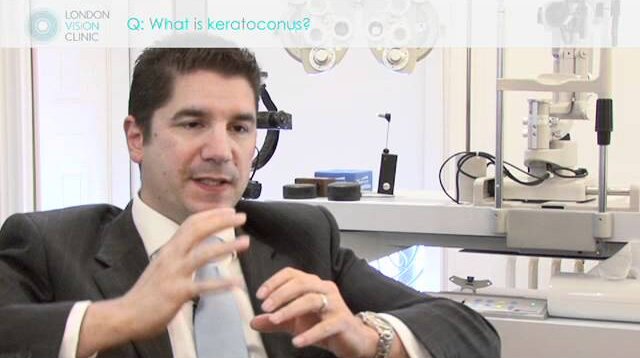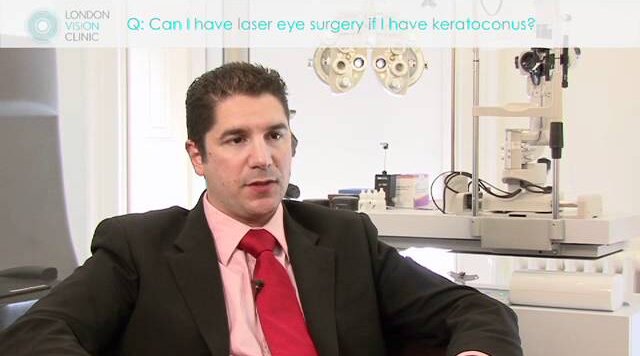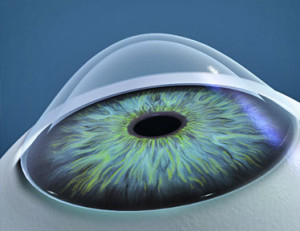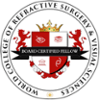Can I Have Laser Eye Surgery if I have Keratoconus?
While Laser Eye Surgery technology and expertise have advanced significantly, there are still some cases in which the treatment is not an option. At London Vision Clinic, it has become increasingly rare that we have to turn people away for Laser Eye Surgery; however, some conditions are simply outside the control of even the most experienced surgeons and the most advanced tools.
In this article, we’re taking a look at keratoconus, from what it is to how it can affect your suitability for Laser Eye Surgery treatment.
What is Keratoconus?
Keratoconus is a genetic eye condition that affects the cornea. It is characterised by an inherent weakness within the stromal layer of the cornea. While the cornea is usually dome-shaped, keratoconus causes it to become progressively thinner and bulge out into a cone shape over time.
Essentially, keratoconus is a severe form of astigmatism. This change in shape affects the way the cornea refracts light into the eye and onto the retina. As a result, keratoconus is associated with blurry and distorted vision that can make daily tasks such as reading and driving more difficult.
Although glasses or contact lenses can help in the early stages, they become less effective as the condition develops and the cornea continues to thin and change shape.
While blurred vision is the main symptom of keratoconus, the condition can also cause distorted vision (such as straight lines looking wavy), an increased sensitivity to light, and eye redness or swelling.
In the video below, Mr. Glenn Carp tells us more about Keratoconus.

What Causes Keratoconus?
The cause of keratoconus is still not completely understood. In some cases, it is believed to be genetic with around 1 in 10 people with keratoconus also having a parent with the condition. However, keratoconus is also associated with:
- Eye allergies
- Excessive eye rubbing
- Connective tissue disorders (such as Marfan syndrome and Ehlers-Danlos syndrome)
Keratoconus and Laser Eye Surgery
As mentioned at the start of this article, keratoconus is considered a contraindication for Laser Eye Surgery, meaning that having the condition will make you unsuitable for treatment.
Laser Eye Surgery corrects refractive errors such as myopia (short-sightedness), hyperopia (long-sightedness), and astigmatism by changing the shape of the cornea. This is achieved by removing a pre-determined amount of corneal tissue from the eye. Therefore, a stable and thick cornea is required for treatment. The progressive nature of keratoconus means that the cornea is not stable.
In the video below, Mr. Glenn Carp tells us more about Laser Eye Surgery and Keratoconus.

You may have also heard that patients with thin corneas (without the presence of keratoconus) are not suitable for Laser Eye Surgery – but this is not always the case.
Are there any treatments for Keratoconus?
As mentioned above, in the early stages of keratoconus development, glasses and soft contact lenses may be sufficient to correct the associated refractive errors. However, as the cornea becomes thinner and steeper, these are likely to become ineffective.
Eventually, soft or rigid gas permeable (RPG) contact lenses may be required to achieve the same effect. As the condition worsens, a corneal transplant may be considered, though this procedure is becoming increasingly uncommon.
Cross-Linking Treatment for Keratoconus
Since 2016, a modern treatment known as cross-linking has become suitable for more than 90% of patients. Cross-linking treatment (CXL) is a non-invasive, once-off procedure where custom-made riboflavin eye drops are applied to the cornea, and then activated with ultraviolet light. Once activated, these drops encourage cross-linking, or bonding, between adjacent strands of collagen in the cornea.
These strands are the natural molecular anchors that strengthen the cornea, and help it maintain its normal shape. Strengthening them through cross-linking treatment can slow or even stop the progression of the keratoconus.
Intacs®
Cross-linking treatment can also be combined with clear corneal inserts called Intacs® which are surgically applied to the cornea to help reshape it. Intacs® used in keratoconus eye surgery is made from a material that’s been used safely in contact lenses and cataract surgery for over 50 years. They can also be surgically removed and exchanged later if necessary.
The combination of these two treatments can help flatten the cornea further than either could achieve alone. Learn more about treatment for keratoconus.
If you’d like to learn more about your suitability for Laser Eye Surgery, get in touch with one of our friendly clinic coordinators. Alternatively, if you’re ready to start your journey to clear vision, Book a Consultation today.



